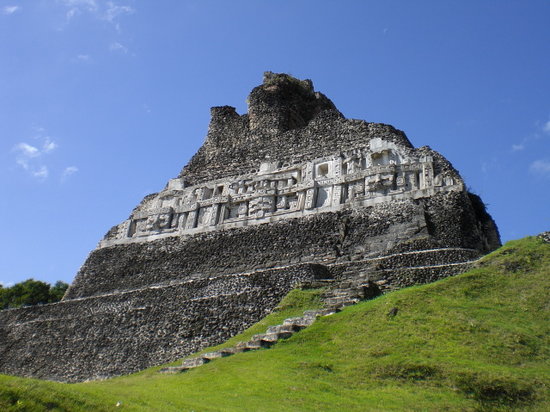Formerly known as British Honduras, the Spanish
Conquistadors had first claimed the area. Eventually the British did take
over, and it became one of the many areas they would bring Africans as part of the
slave trade. The major export for this area is mahogany, which became most of
the slave’s number one job. Even after they were freed, most had no choice but
to keep working in this field.
Belize is fairly diverse, as far as demographics go. Of
course, the Maya were originally in the area. Three of its groups found here
include the Yucatec (originally from Mexico but came to Belize to escape war), the
Mopan, and the Kekchi, (both of whom fled the country at various times to avoid
slavery, returning later). The Creoles are descendants of the slave owners (mostly
English and Scottish pirates and other settlers) and the African slaves who were
brought here. Then you have the Garifuna (also called Garinagu), who are a mix
of African, Arawak and other Carib peoples. Primarily settled in and around Saint
Vincent and the Grenadines, the British started separating them based on how “African”
they looked when they took over the island nation. Eventually they were traded
to the Spanish who employed them as soldiers, and spread them throughout the
Caribbean, many “deployed” to Belize where they stayed. And of course there are
mestizos (mixtures of Spanish and Maya), as well as Mennonite farmers, East
Indians, East Asians, North Americans, and Mediterraneans.
Thanks to the British, English is the official language of
Belize, making it the only English-speaking country in Central America. While
English is the language of public education, many Belizeans also speak Spanish,
and most speak a Belizean Creole. Belize is proudly a dual-language nation and
encourage bilingualism.
It’s somewhat unclear as to where the name Belize actually came
from. Some think it may be from the Maya word “belix” which means “muddy waters”
that described the muddy waters of the Belize River. Another theory is that it
may have been brought over from the numerous Africans who were brought to the
area; there is a Belize in the country of Angola as well. Like the Tootsie Roll
Pop, the world may never know.
The capital is Belmopan, not its largest city Belize City. The
name Belmopan was created as a merging of the words “Belize” and “Mopan,” the
name of two major rivers. Actually, the capital used to be in the port city of
Belize City, but was eventually moved to Belmopan after Hurricane Hattie nearly
demolished Belize City in 1961.
Since the British were the ones who controlled the area
until Belize’s independence in 1981, almost 72% of Belizeans identify
themselves as some denomination of Christianity. Around 10% follow some other
religion (Buddhist, Mayan, Garifuni, Islam, Obeah, Hindu, Rastafarian, Baha’i, etc.),
and over 15% say they have no religion.
Belize is now a popular ecotourism hotspot with its many rainforests,
coral reefs, flora and fauna. The mahogany tree that was once the object of exploitation
during slavery days is now a national treasure (in fact, the national motto is “Sub
Umbra Florero” which roughly means “Under the Mahogany Tree, I flourish”),
along with Baird’s tapir (one of the ugliest animals, in my opinion; it’s just
so weird to look at. However, it’s on the endangered list and is protected in
Belize) and the brightly-colored keel billed toucan. Its diversity in its
people and cultural traditions is what makes Belize a very captivating country.
With influences from the British, the Spanish, and the Caribbean, you can
certainly see its history emerge through its music, arts, and cuisine into
something better than what it started out as.
Up next: Holidays and Celebrations






No comments:
Post a Comment